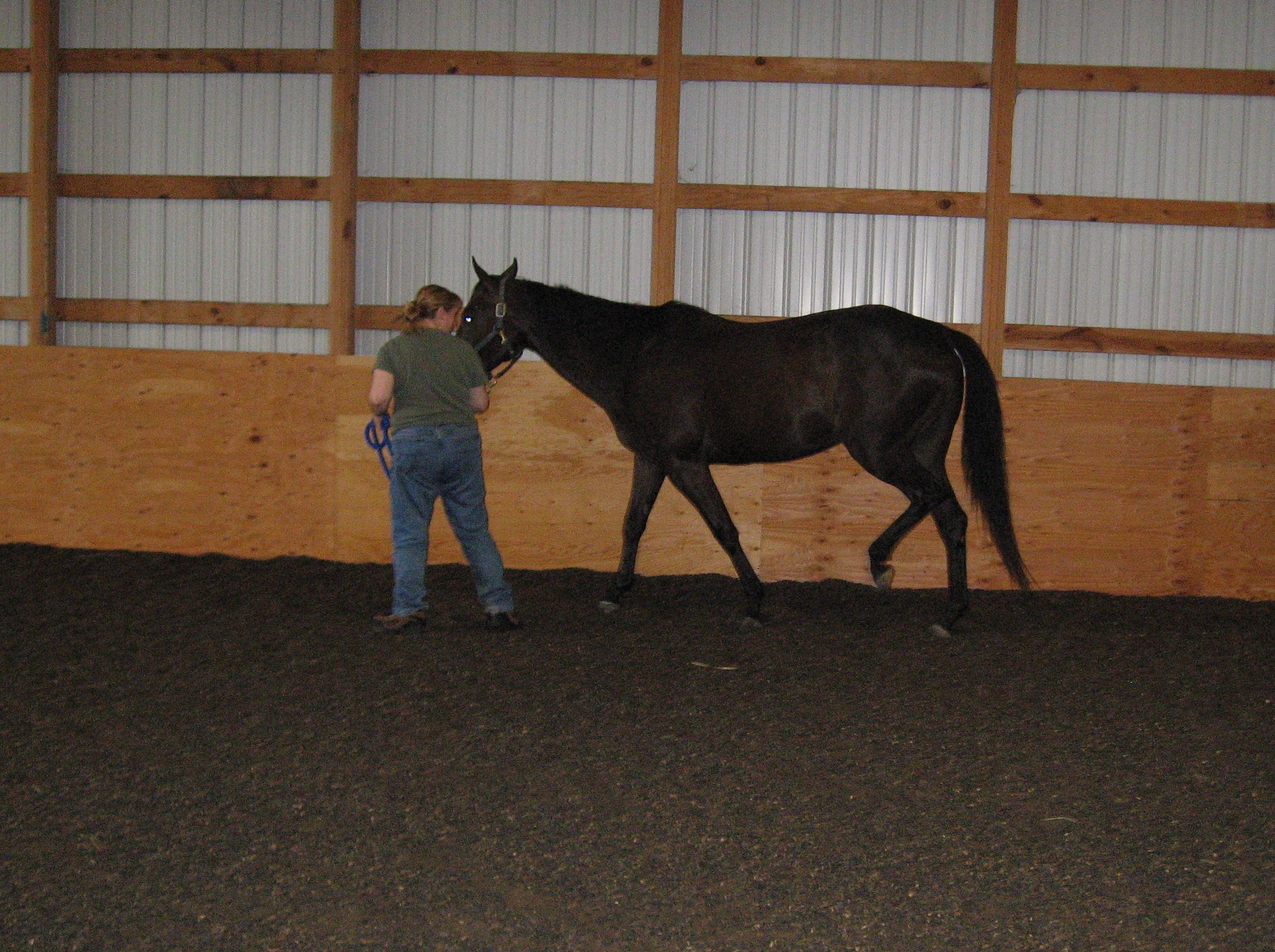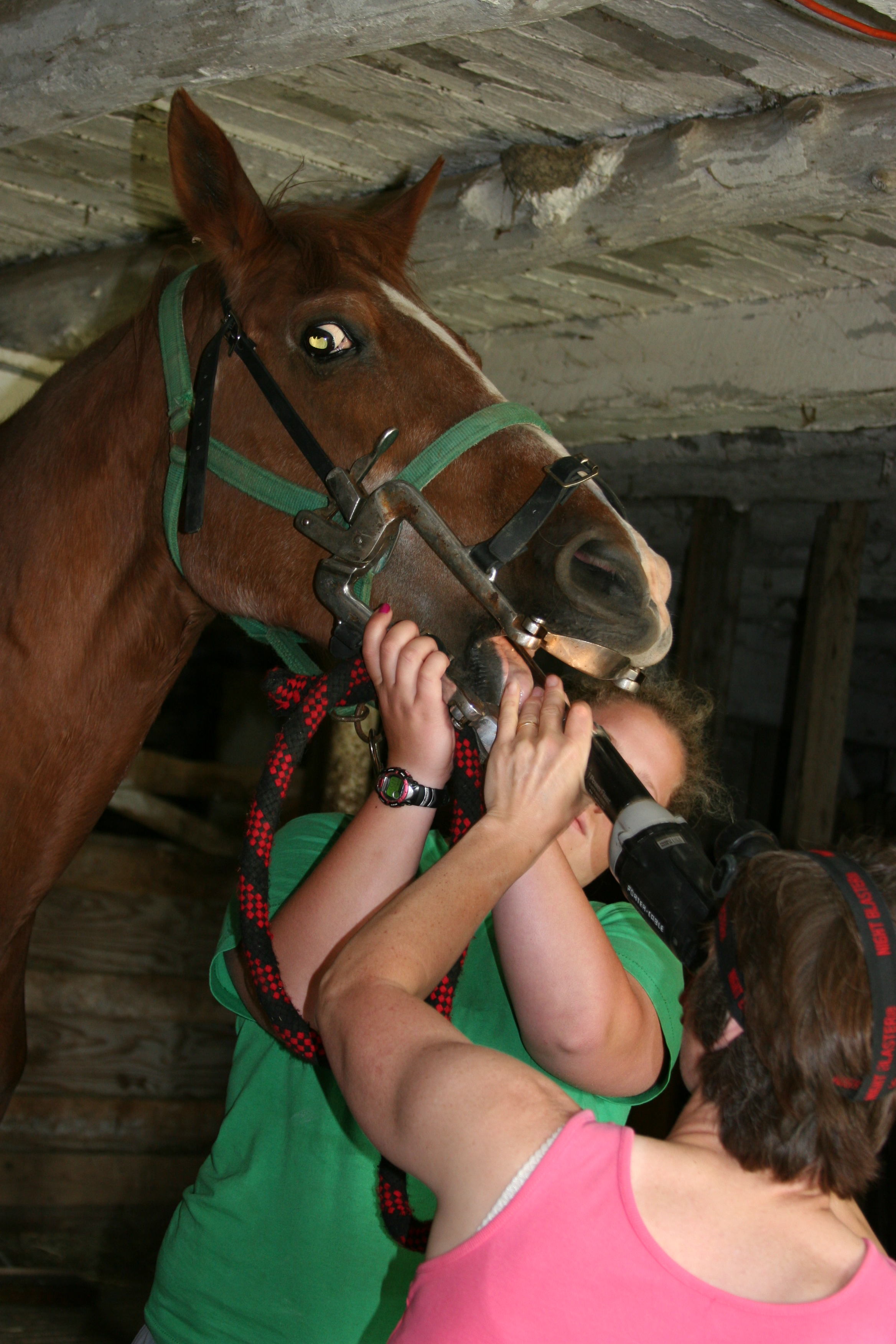Safe Equine Fencing Review
 Monday, April 8, 2013
Monday, April 8, 2013 Every year we see and treat horses that are injured in their pastures. We would like to take this time to review some safety tips for horse fencing.
Fencing review: Horse fencing is not a “one size fits all” product and your individual needs and preferences should be considered when building fencing. There are many fencing options available today made from a variety of materials in many shapes, sizes and colors. While we are not going to mention all fencing types we will comment on some of the more popular fencing options.
With all types of fencing we recommend routine maintenance and visual inspection. All fencing should be either professionally installed or installed using manufacturer’s recommendations. We recommend never using metal posts as they are a serious laceration hazard. Care should be taken to acclimate your horses to new fencing and never just put them into a new paddock without showing the fencing to them.
High Tensile Fences:High Tensile Fencing should never be used for horses of any kind. One of the many problems with this type of fencing is visibility in that horses can have a hard time seeing the fencing even though there are many strands of it. Common horse injuries with this type of fencing happen when a horse gets its leg through the fence. Since the fencing is so tight the horse often severely cuts its leg when it pulls it back through the fence. It reminds me of a cheese slicer in that it is common for the fence to go to bone and peel everything away from the bone. These are very serious injuries that can be avoided by never using High Tensile Fencing with horses. Another common injury that we see with High Tensile Fencing is that horses can get it wrapped around one of their legs. This can also be very catastrophic as the caught horse often panics and makes the injury much worse. High Tensile Fencing should never be used for horses.
Barbed Wire Fences:Barbed Wire Fencing should never be used for horse fencing. One of the many problems with this type of fencing is visibility in that horses can have a hard time seeing the fencing even though there are many strands of it. Common horse injuries with this type of fencing happen when a horse gets its leg through the fence. Since the fencing is tight the horse often severely cuts its leg when it pulls it back through the fence. These cuts are often magnified by the “barbs” that do a lot more tissue damage to the legs. These are very serious injuries that can be avoided by never using Barbed Wire Fencing with horses. Another common injury that we see with Barbed Wire Fencing is that horses can get it wrapped around one of their legs. This can also be very catastrophic as the caught horse often panics and makes the injury much worse. Barbed Wire Fencing is sometimes used along the top of other fencing products to keep the horses from reaching over the top of the fence to reach the greener grass on the other side. Barbed wire on the top of fencing can be the cause of cuts and lacerations to the face, head, and neck of horses.
Electric Fences:Electric Fences can be very versatile and much easier on the pocketbook than some of the other types of fencing. Visibility is a common problem with electric fences. Strands of wire either smooth or barbed should never be used as it is hard for horses to see. Braided or coated electric fence is much easier for the horses to see. Never use metal posts with electric fencing even if you use the safety caps. Coated fencing can cause lacerations if the coating becomes stripped from the wire.
Wooden Fences:Wood fencing is very durable and has great visibility. Wood and Board fencing can be a problem if you have a horse that cribs or likes to chew wood. Wood fencing can also cause a problem if your horse becomes board and leans on the fence. In general wood fencing is very safe and sturdy.
PVC Fences:PVC fencing looks great but is not recommended for equine fencing. It is very visible but is not very sturdy. If a horse runs into it or leans on it will bend and then break. When PVC fencing breaks it usually splinters and can cause puncture wounds.
Wire Mesh Fences:Wire Mesh Fencing can be very safe and visible. It has low maintenance and can be very durable. Problems can occur when the fencing becomes loose from stretching and sagging. Feet and leg injuries can occur if a horse gets its leg through the fence. It is recommended to put a board or strand of electric on the top of the fence to keep horses from reaching over and leaning on the fence.
Flexible Fencing:Flexible Fencing is the type of fencing that we have installed at Fowlerville Road. We picked this fencing as it is very durable and has great visibility. This type of fencing is very sturdy and yet is forgiving. This type of fencing has 3 wires that are coated inside of the fencing. The fencing should be kept tight and have a yearly inspection to look for bare or exposed wires.
As always if you have any questions about fencing please feel free to call the office at 585 243-5560.



